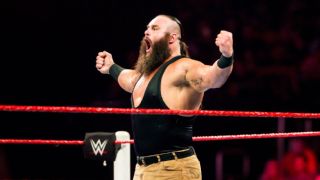|
The Getting Over series aims to detail the psychological rules that the world of pro wrestling has developed over the past 100 years to draw the biggest houses and biggest fan reactions possible. Rule No. 1 - It's all about the money
Rule No. 2 - Fans will hate a heel more if he can make them respect him
Rule No. 3 - A baby face should be billed as a believable underdog
Rule No. 4 - Always exaggerate, even when the truth is impressive
Rule No. 5 - A heel should have no redeemable qualities  One of the most memorable heel turns in pro wrestling history occurred when Larry Zbyszko betrayed Bruno Sammartino by attacking him with a chair following an exhibition match in 1980. Zbyszko had been sold to fans as Sammartino's real-life protégé, and it was easy to believe it because it was true. Sammartino had taken Larry Whistler (Zbyszko's real name) under his wing nearly a decade earlier, training him and then guiding him through his early years in the business. This opened the door for a highly compelling student-betraying-the-teacher storyline, but what really turned this into a white-hot feud was Zbyszko's adherence to the next rule in the Getting Over series. Rule No. 6: A heel uses flawed logic to justify his actionsWhy it works Most people want to be liked and therefore normally won't do things that would make others dislike them. Because of this tendency, when the time comes to cross the Rubicon and do something that will cause them to not be liked, people will aim to find any way to justify their actions -- even if it requires flawed logic to do so. This justification might work, to an extent, when telling a white lie, but when it is done in conjunction with the types of actions a pro wrestling heel partakes in, it comes across as excusing dirty deeds -- and it tends to infuriate audiences who see the malevolence for what it is. In Zbyszko's case, his character was jealous of Sammartino's talent, fame and fortune. Zbyszko was also afraid to confront Sammartino, because he knew deep down that Sammartino was the better wrestler. The logical way to handle this situation would be for Zbyszko to accept these disparities and be thankful for everything Sammartino did for him, but Zbyszko's character couldn't accept that. Instead, he found a way to get Sammartino to take on an exhibition match that was supposed to be a friendly test of skills that Zbyszko convinced himself he could win. When that match didn't go in Zbyszko's favor early on, he no longer had an honest out. At that point he had to make a choice -- accept a humiliating defeat or find an illogically flawed alternative, the latter of which presented itself after Sammartino accidentally threw Zbyszko from the ring following a clinch. This provided Zbyszko the opportunity to get mad at Sammartino and justify his betrayal, a justification fans rightfully saw as a flimsy excuse to turn on his mentor. No good deed goes unpunished By the mid-1980s, Ric Flair and Dusty Rhodes had been feuding for various regional and world titles for nearly a decade. That should have made any disagreement between the two unsurprising, but Flair found a way to incorporate the flawed logic rule into their quarrel following a cage match Flair had against Nikita Koloff in September 1985. Flair had just defeated Koloff to retain the NWA world heavyweight championship when Ivan Koloff ran into the ring and proceeded to assist Nikita in a double-team attack against Flair while Kruscher Khruschev guarded the ring door. Rhodes ran down to break up this mugging and cleared the ring with a set of Bionic Elbows. Flair's character should have been thankful to be saved from such a beating, but he and The Four Horsemen didn't see it that way. Instead of thanking Rhodes for his efforts, they proceeded to attack him, lock the cage and then "break" his ankle. These actions caused what Flair said was "a [legitimate] full-scale riot" among the fans at the arena that night, so it's all that was needed to assure a string of sellouts across the country -- but Flair went even further by finding an illogical way to justify those actions. Flair didn't mind getting rescued from an assault, as The Four Horsemen had done that type of thing for him on many occasions, so he had to call out Dusty for sticking his nose into Flair and the Andersons' own personal business. The way he saw it, Rhodes wasn't part of his gang and therefore should have known better than to try to help him out. In Flair's mind, the attack was simply a way to drive that point home, but the fans saw it as his being ungrateful for the help, and it served to move Flair to the top of the most hated list.  Might makes right The illogical justification also applies to a longtime staple of televised pro wrestling -- the squash match. This type of bout typically features an average-sized person versus a powerhouse behemoth in a battle that often doesn't last for more than a minute. These types of matches don't happen in real fighting sports because of the use of weight classes, but pro wrestling isn't interested in fair fighting -- it's interested in getting a reaction from the audience, and nothing does that better than an unfair fight. It's why promotions over the years have showcased mismatches like The Road Warriors vs. Bill & Randy Mulkey (the ultimate jabroni tandem), Brock Lesnar sending both Bo Dallas and Heath Slater to Suplex City and Braun Strowman obliterating a trio of jobbers who likely couldn't have matched his weightlifting prowess if they combined their lifts. These contests highlight the illogical idea that might should make right -- a mindset that understandably drives fans to want to see these bullies get their comeuppance.
|
